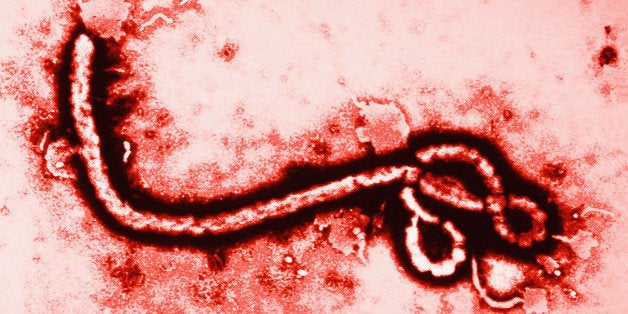
By Liliana Losada Brown, PhD, Associate Director, Scientific Programs at SWHR
Did you know that more women get sick from salmonella than men [1]? Or that men are more likely to develop staph infections [2]? These are just two examples of the many infectious diseases that impact women and men differently [3]. Even though a new wave of research on these differences is paving the way to develop better prevention strategies, more work needs to be done to get this information into the hands of healthcare providers.
Differences in infectious diseases between women and men are commonly thought to develop from lifestyle choices ranging from food choices, day-to-day activities, type of occupation, choosing to smoke, or even whether you choose to see a medical professional when you get sick. For instance, more women get salmonella infections in the U.S. because more women than men choose to eat raw fruits and vegetables [1, 4] , which contain potentially harmful bacteria that have not been killed by cooking. A reason staph infections are higher in men could be that more men play contact sports, leaving them with scrapes and cuts that weaken the skin's normal protection [2]. Some occupations that have a gender bias -- like nursing or mining -- also put people at risk unevenly. For example, up to 75 percent of Ebola deaths in some countries were women, because women made up the majority of nurses and caregivers for ailing family members [5]. In contrast, two-times more men than women have tuberculosis (TB) around the world [6], stemming from men's more frequent exposure to lung-damaging toxins because of being employed in occupations like mining or construction, and smoking cigarettes more than women do [7]. However, smoking rates are on the rise in young women around the world [8], thereby increasing their risk of TB. Thus, surveillance and prevention of TB and other infectious diseases must account for sex and changing patterns in lifestyle choices in order to be effective.
New studies show that our biological sex also influences our risk of contracting an infectious disease. Research suggests that women fight off infection more effectively than men, giving women an 'immunological privilege' [3, 9]. This privilege might be due to the fact that women carry two X chromosomes, compared to men who have one X and a Y instead. The X chromosome carries genes that are essential to the immune system [10]. However, because a single X chromosome in every cell is randomly inactivated in a woman's body, including in immune cells, it is possible that having two X chromosomes offers additional alternatives that result in better protection from invading pathogens.
Similarly, sex hormones -- especially estrogen -- help regulate the immune responses [10], so higher levels of estrogen in women may also result in more versatility in protection. Recently, researchers found that testosterone itself lowered the immune reaction against influenza [11], which can place men at higher risk. Interestingly, for many infectious diseases including staph, older women are actually at a higher risk than older men (in contrast to those young athletes mentioned earlier), suggesting that their immunological privilege might disappear after menopause [2, 3]. The effects of changing hormone levels across a woman's life relating to their risk of contracting infectious diseases are not yet understood and are an ongoing area of research.
We need to better understand how our biological sex and our behaviors affect our risk of getting sick from infectious diseases. With better understanding comes better prevention and more targeted public health campaigns. More awareness will also encourage researchers to study sex differences in infectious diseases, which the Society for Women's Health Research (SWHR®) has been advocating for years. Understanding sex differences in infectious diseases can help us learn more about what makes women's and men's immune systems work and how pathogens make us sick thereby leading to personalized treatments and prevention. SWHR® is dedicated to promoting research on sex and gender differences in diseases. Click here to learn more about our work on infectious diseases.
References
1.Reller, M E., et al., Excess salmonellosis in women in the United States: 1968-2000. Epidemiology and Infection, 2008. 136(8): p. 1109-1117.
2.Humphreys, H., F. Fitzpatick, and B.J. Harvey, Gender differences in rates of carriage and bloodstream infection caused by methicillin-resistant Staphylococcus aureus. Are they real, do they matter and why? Clinical Infectious Diseases, 2015.
3.Giefing-Kröll, C., et al., How sex and age affect immune responses, susceptibility to infections, and response to vaccination. Aging Cell, 2015. 14(3): p. 309-321.
4.Shiferaw, B., et al., Sex-Based Differences in Food Consumption: Foodborne Diseases Active Surveillance Network (FoodNet) Population Survey, 2006-2007. Clinical Infectious Diseases, 2012. 54(suppl 5): p. S453-S457.
5.Mulvihill, K. Why More Women Than Men Are Dying in the Ebola Outbreak. Yahoo Health News 2014 10/30/2015]; Available from: https://www.yahoo.com/health/why-more-women-than-men-are-dying-in-the-ebola-outbreak-95476080612.html.
6.Neyrolles, O. and L. Quintana-Murci, Sexual Inequality in Tuberculosis. PLoS Med, 2009. 6(12): p. e1000199.
7.Nhamoyebonde, S. and A. Leslie, Biological differences between the sexes and susceptibility to tuberculosis. J Infect Dis, 2014. 209 Suppl 3: p. S100-6.
8.World Health Organization, WHO report on the global tobacco epidemic, 2013 : enforcing bans on tobacco advertising, promotion and sponsorship.(in IRIS). 2013, Geneva: World Health Organization. 202 p.
9.Spolarics, Z., The X-files of inflammation: cellular mosaicism of X-linked polymorphic genes and the female advantage in the host response to injury and infection. Shock, 2007. 27(6): p. 597-604.
10.Klein, S.L., A. Jedlicka, and A. Pekosz, The Xs and Y of immune responses to viral vaccines. The Lancet Infectious Diseases, 2010. 10(5): p. 338-349.
11.Furman, D., et al., Systems analysis of sex differences reveals an immunosuppressive role for testosterone in the response to influenza vaccination. Proceedings of the National Academy of Sciences, 2014. 111(2): p. 869-874.